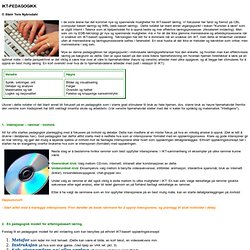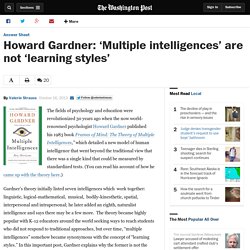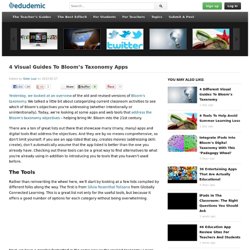

The 4 Stages Of Edtech Disruption. The 4 Stages Of The Integration Of Technology In Learning by Terry Heick For professional development around this idea or others you read about on TeachThought, contact us.

Technology can be used in the learning process in a variety of ways. Some are supplementary, serving the original design of the classroom and usually automate some previously by-human task or process–grading multiple choice assessments, searching for a source of information, or sharing messages and other data across large groups. But fully integrated and embedded in the learning process, technology can be transformative–and disruptive. Scaffolding the learning of anything unfamiliar–somehow–is a way of supporting the learner and setting them up for long-term independent success. Should elementary school be stage 1, middle school stage 2, and so on?
Should all learners begin a school year at stage 1 and move as far as they can towards stage 4? Can a planned learning experience be evaluated using this framework in mind? IKT pedagogikk. © Stein Tore Nybrodahl I de siste årene har det kommet nye og spennende muligheter for IKT-basert læring.

Vi fokuserer her først og fremst på CBL (computer basert læring) og WBL (web basert læring). Dette notatet tar blant annet utgangspunkt i boken "Kunsten å lære" som er utgitt internt i Telenor som et hjelpemiddel for å oppnå bedre og mer effektive læringsprosesser. (Akselerert innlæring). Överlever högskolan globala nätkurser?
Howard Gardner: ‘Multiple intelligences’ are not ‘learning styles’ The fields of psychology and education were revolutionized 30 years ago when the now world-renowned psychologist Howard Gardner published his 1983 book Frames of Mind: The Theory of Multiple Intelligences,” which detailed a new model of human intelligence that went beyond the traditional view that there was a single kind that could be measured by standardized tests.

(You can read his account of how he came up with the theory here.) Gardner’s theory initially listed seven intelligences which work together: linguistic, logical-mathematical, musical, bodily-kinesthetic, spatial, interpersonal and intrapersonal; he later added an eighth, naturalist intelligence and says there may be a few more. The theory became highly popular with K-12 educators around the world seeking ways to reach students who did not respond to traditional approaches, but over time, “multiple intelligences” somehow became synonymous with the concept of “learning styles.” By Howard Gardner Two problems. Problem #2. 1.
Social Media. 4 Visual Guides To Bloom's Taxonomy Apps. Yesterday, we looked at an overview of the old and revised versions of Bloom’s taxonomy .

We talked a little bit about categorizing current classroom activities to see which of Bloom’s objectives you’re addressing (whether intentionally or unintentionally). Today, we’re looking at some apps and web tools that address the Bloom’s taxonomy objectives – helping bring Mr. Bloom into the 21st century. There are a ton of great lists out there that showcase many (many, many) apps and digital tools that address the objectives. And they are by no means comprehensive, so don’t limit yourself. Rather than reinventing the wheel here, we’ll start by looking at a few lists compiled by different folks along the way. Next, we have a graphic formatted in the same way as the revised taxonomy. Next up, a visually pleasing peacock.
Kathy Schrock always puts together great lists of tools that address Bloom’s – here is just one of them. Change.mooc.ca ~ #change11. Top 10 Reasons to Use Technology in Education: iPad, Tablet, Computer, Listening Centers. 1of4 ROGER SCHANK "Future of Education"_Madrid_2010.
The Flipped Classroom: Turning the Traditional Classroom on its Head. 50_digitale_laeringsressurser_i_undervisningen_pdf.